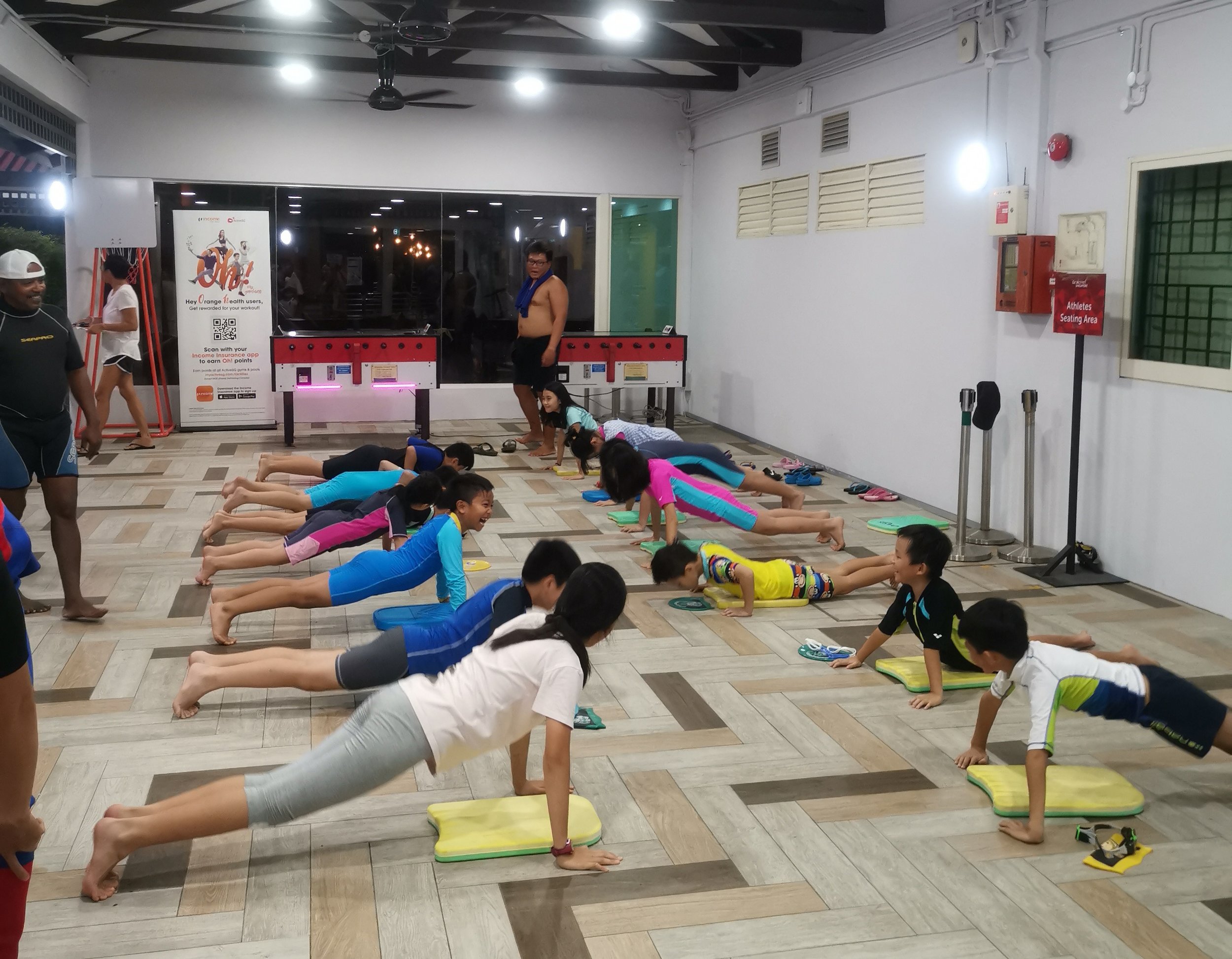The Importance of Dryland Training
Contrary to many parents’ belief, dryland training is not a waste of time. It is not a “yet another PE lesson”, and it definitely isn’t a marketing gimmick to try to earn parents’ money when no water activities are conducted. Our team, along with many fellow coaches in the same industry, have been fighting an uphill battle to explain to parents why Dryland training is important. And WHY did we only conduct it during rainy days?
Odysseus Swimmers going through Dryland Trainings
Dryland training is one important aspect in swimming because of the following reasons:
1. Building Strength
All your kicks and pulls need strength, and it cannot be built when swimming in water alone!
Improved overall strength will create a more efficient and powerful swimmer. Strength training will help a swimmer maintain a tight streamline in the water and develop strong legs to support your core. Without proper glute and leg muscle activation your legs may sink and create drag. A good dryland program will help to build strength and balance which is difficult to be aquired by working out in the water alone. (- source)
2. Building up Fundamental Motor Skills that will help children to pick up sports effectively
We have students who cannot do simple coordination exercises and dryland practice gives them the opportunity to do it. Some parents' might ask, “What is Fundamental Motorskills and why is it even important for my children?”
Fundamental movement skills are movement patterns that involve various body parts and provide the basis of physical movement. There are twelve basic fundamental movement skills considered to be building blocks for movement. The twelve fundamental movement skills are: catch, kick, run (sprint), hop, skip, vertical jump, side gallop, overarm throw, ball bounce, leap, dodge and forehand strike. (- source 1 and 2)
Children with motor learning difficulties (MLD) tend to be less physically active than their coordinated peers and one likely consequence is a reduced level of physical fitness. Children with MLD also tend to have higher BMI (leading to obesity and overweight). All these results to difficulties in picking up new sports, and also difficulty in swimming because the sport requires coordination, balance and strength, all of these falling under the Fundamental Motorskills department
3. Injury Prevention
The repetitive motions in swimming can lead to chronic injuries. Dryland training varies an athlete's patterns of movement and challenges their muscles to learn new exercises. It can target areas left underdeveloped by swimming and relieve some of the demand placed on more stressed muscle groups. Stronger muscles also help distribute force correctly, putting less strain on the body. (- source)
At Odysseus Aquatics…
We completely understand that parents would like to “make their money worthwhile” by seeing their children swimming in the water for the entire 60 minutes. However, as Dryland training is as important as water training, we balance our curriculum out by conducting Dryland trainings during rainy weather, where water training cannot be conducted.
Dryland training also give coaches opportunities to correct the students’ stroke position because more often than not, stroke position is difficult to correct in the water as students struggle with balancing and coordination already.
At the end of the day…
We hope that parents understand the importance of Dryland training and why we choose to conduct it even though it is highly unpopular amongst students (the muscle sores after training are real!), but please help us to explain to your children. We also hope that parents will continue to send their children down during bad weather as we spend many hours developing a useful and relevant Dryland programme for our children for their best growth.
